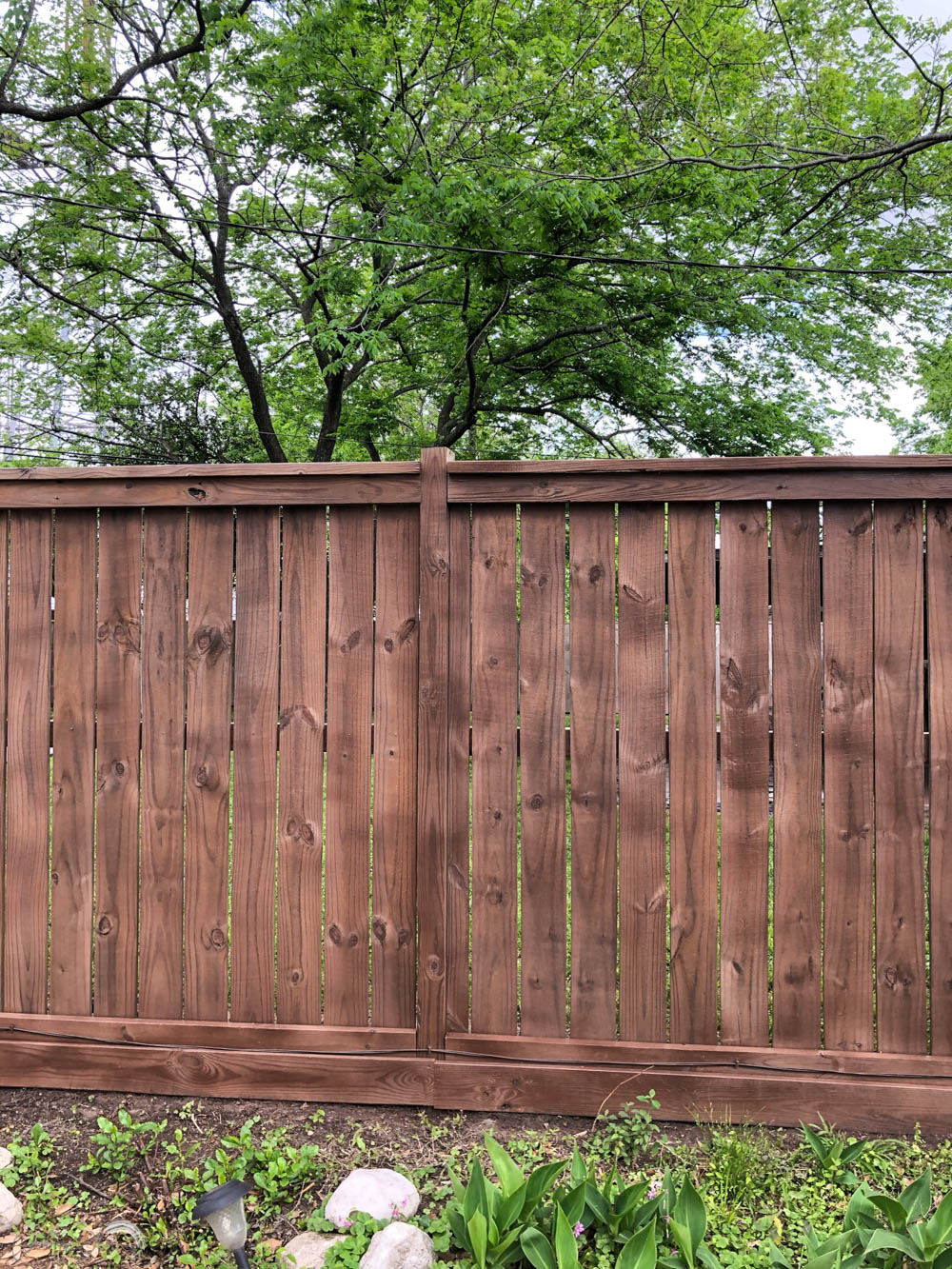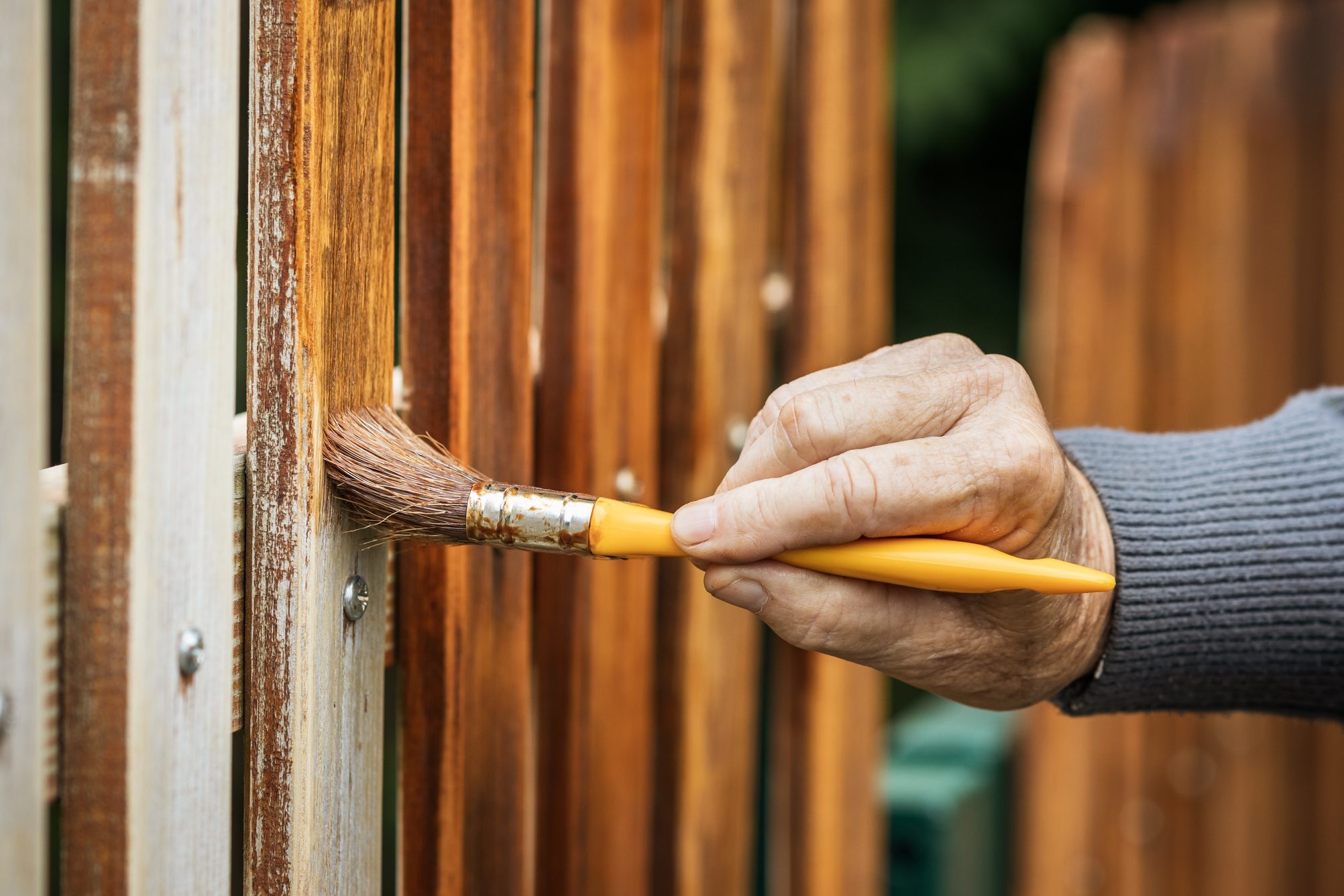The Ultimate Guide to Fencing Discoloration: Tips and Techniques You Need to Know
In the world of home upkeep, fencing discoloration typically emerges as a task that calls for focus yet is regularly ignored. The process entails even more than simply slapping on a coat of stain; it demands precision, knowledge, and the best strategies to ensure a resilient and visually enticing result. Whether you are a skilled do it yourself lover or a property owner aiming to enhance the visual allure of your building, recognizing the nuances of fencing staining can make a significant distinction. Allow's explore the intricacies of this relatively straightforward yet remarkably complex job to open the secrets that can change your fencing from a mere limit to a standout feature of your exterior room.
Benefits of Fencing Discoloration
What advantages does fence discoloration offer to homeowners seeking to boost both the appearance and longevity of their outdoor frameworks? Fencing discoloration supplies countless advantages that make it a preferred choice for property owners looking to safeguard and enhance their fencings.
Additionally, fencing staining helps to safeguard the wood from the aspects, such as rainfall, snow, and UV rays. This defense not just stops the timber from decomposing and rotting but also prolongs its life expectancy, conserving home owners money on pricey fixings or replacements over time. Fence Staining Service. In addition, staining produces an obstacle versus bugs, such as termites and carpenter ants, which can cause considerable damage to neglected wood fencings
Picking the Right Spot

Another factor to take into consideration is the degree of protection you prefer for your fence. Clear stains supply minimal defense versus UV rays and moisture, while semi-transparent and solid discolorations provide raised protection. If your fencing is exposed to extreme weather, a solid tarnish may be the very best choice to guarantee optimum durability.

Preparing Your Fence
Before applying the picked tarnish, comprehensive preparation of the fencing surface area is necessary to guarantee optimal outcomes. Begin by cleaning up the fencing to get rid of dust, particles, and any old tarnish or paint. Utilize a pressure washer or a tight brush with a cleaning solution to scrub the surface area thoroughly (Nashville Fence Staining). Enable the fencing to dry entirely before proceeding. Next off, check the fence for any type of indicators of damage such as splits, splinters, or loosened boards. Make needed repair work to guarantee the fencing is structurally sound.
After cleansing and fixing, it is important to sand the fencing to produce a smooth surface area for the discolor to follow. Utilize a medium-grit sandpaper to get rid of any kind of rough patches or imperfections. Wipe down the fencing with a tack cloth to eliminate any staying dust particles.
Applying the Spot

When applying the stain, work systematically section by area, starting from the top and relocating downwards to protect against drips and make sure also coverage. Use long, smooth strokes to use the tarnish in the direction of the wood grain, enabling for better infiltration and an extra specialist coating.
Keeping Your Stained Fence
To guarantee the longevity and visual charm of your tarnished fencing, routine upkeep is necessary. The initial step in preserving your discolored fence is to regularly check it for any indicators of wear, such as fading, peeling, or fracturing. Addressing these issues without delay can protect against additional damage and extend the life of your tarnish. It is suggested to cleanse your stained fence at the very least annually utilizing a light cleaning agent and water to get rid of dust, crud, and mildew build-up. After cleansing, allow the fencing to dry completely before applying any added treatments or discolorations. Furthermore, it is important to keep track of the sealant on your discolored fencing and why not look here reapply it as required to secure the wood from moisture and UV damage. Lastly, keep greenery cut and away from the fencing to stop mold and mildew growth. By complying with these upkeep ideas, you can make certain that your discolored fence continues to be in top condition for years to come.
Final Thought
To conclude, fence discoloration supplies various benefits such as security versus weathering and enhancing the visual allure of your property. By choosing the ideal stain, properly preparing your fence, using the tarnish correctly, and preserving it frequently, you can guarantee your fence continues to be in leading condition for years to find. Following these ideas and techniques will assist you attain a wonderfully stained fence that will stand the test of time.